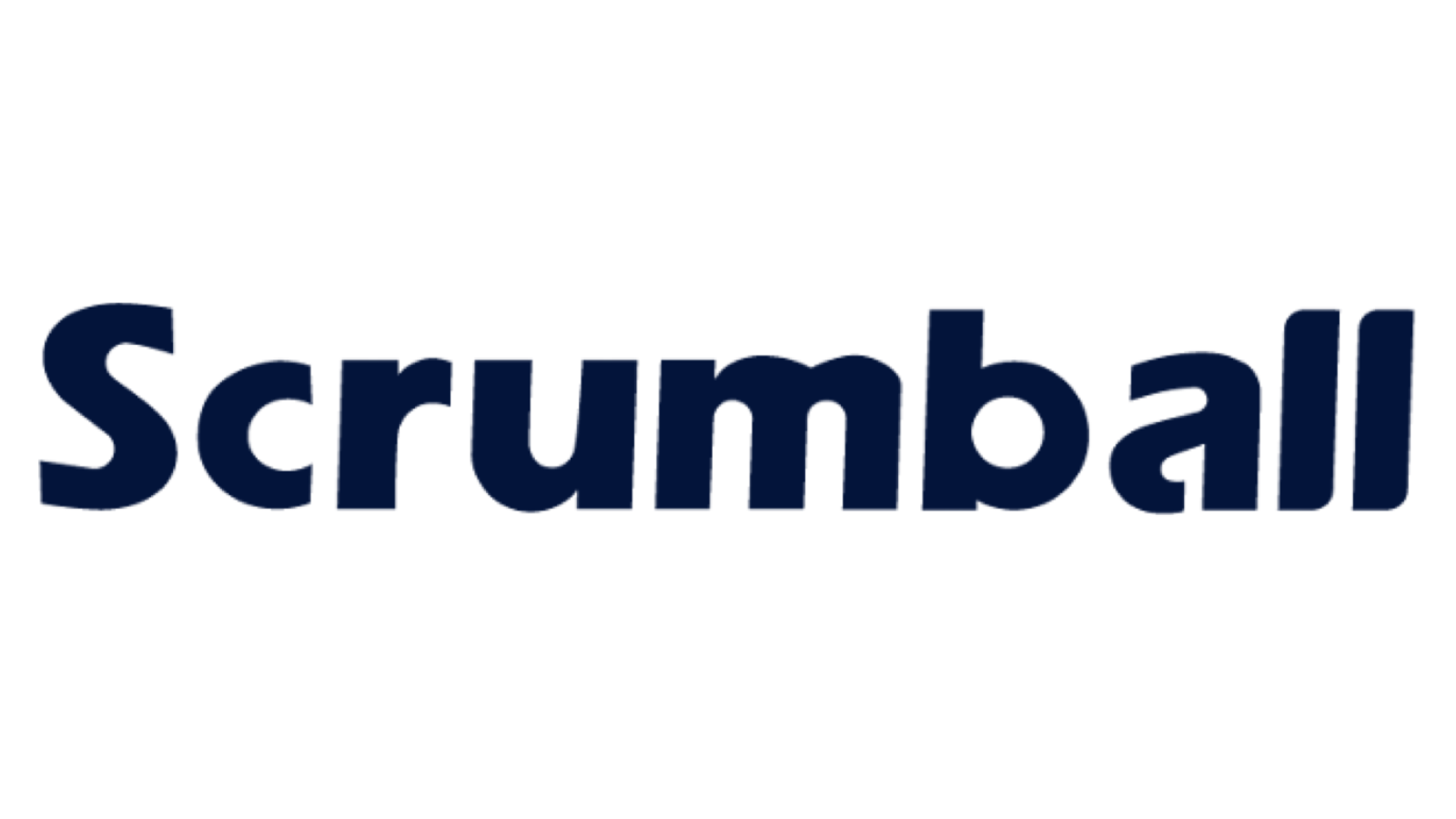How Marketing Automation Works and Its Key Features in 2025

Marketing automation meaning has evolved significantly by 2025, becoming a cornerstone of modern business strategies. It refers to the use of technology to streamline repetitive marketing tasks, enabling you to focus on building meaningful customer relationships. Adoption rates for these tools have surged, with 80-90% of businesses now leveraging them, compared to 76% in 2024:
| Year | Adoption Rate (%) |
|---|---|
| 2024 | 76% |
| 2025 | 80-90% |
This widespread adoption reflects its transformative impact. Predictive analytics, a key component, allows you to forecast customer behavior and optimize campaigns. Hyper-personalization, powered by AI, tailors experiences to individual preferences, boosting engagement. Omnichannel marketing ensures consistent messaging across platforms, while AI chatbots provide instant, personalized support. These features save time, improve efficiency, and create seamless customer experiences, making marketing automation indispensable for businesses like yours.
How Marketing Automation Works

Data Collection and Integration
The foundation of the marketing automation process lies in effective customer data collection. You need accurate and up-to-date information to ensure your campaigns succeed. Automation tools simplify this process by gathering data from multiple sources, such as website interactions, social media, and emails. A Customer Data Platform (CDP) can centralize this information, giving you a real-time, unified view of your customers. Proper data management prevents issues like outdated or incorrect details, which can derail your efforts. By integrating data across platforms, you create a seamless flow that powers your marketing automation workflows.
Audience Segmentation
Customer segmentation is a critical step in the marketing automation process. Dividing your audience into meaningful groups allows you to deliver personalized messages that resonate. You can segment your audience based on demographics like age, gender, or location. Behavioral segmentation focuses on past actions, such as purchases or email interactions. Psychographic segmentation considers values, interests, and lifestyles, while geographic segmentation targets customers based on their location. These methods help you understand your customer segments better, enabling you to create automated campaigns that drive engagement and conversions. Tailored content increases relevance, improves targeting, and enhances the overall customer experience.
Workflow Setup and Automation
Setting up marketing automation workflows involves creating a series of steps that guide your customers through their journey. To start, you must understand your audience’s needs and pain points. This knowledge helps you design workflows that address specific challenges. Keep the process simple to ensure efficiency and adaptability. For example, automated workflows can send follow-up emails after a customer signs up or trigger personalized emails based on their behavior. These workflows nurture leads, improve conversions, and enhance customer satisfaction. Workflow automation ensures that your marketing efforts run smoothly, saving you time and resources while delivering consistent results.
Personalization and Dynamic Content
Personalization has become a cornerstone of marketing automation in 2025. Dynamic content allows you to create tailored experiences that resonate with individual customer preferences and behaviors. This approach enhances customer engagement and improves campaign performance. Dynamic content refers to any digital material that changes based on user data and behavior. It ensures that your audience receives content they are most likely to engage with, creating a customer-centric experience at every stage of the buyer's journey.
Tip: Use dynamic content to make your marketing automation campaigns more effective. It helps you deliver personalized content that aligns with customer needs.
Here are some examples of dynamic content you can use in your campaigns:
- Personalized email campaigns with customized templates and greetings.
- Dynamic ad titles that adjust based on user search queries.
- On-site engagement tools like product recommendations and site search functionalities.
By leveraging these tools, you can create marketing automation strategies that feel personal and relevant. This level of personalization builds trust and loyalty, ensuring your customers stay engaged with your brand.
Performance Analysis and Optimization
Analyzing campaign performance is essential for optimizing your marketing automation strategies. Tracking key metrics helps you understand what works and what doesn’t. Engagement metrics like click-through rate (CTR), open rate, and conversion rate reveal how your audience interacts with your campaigns. Performance metrics such as marketing qualified leads (MQLs) and sales qualified leads (SQLs) measure the effectiveness of your lead generation efforts. Additionally, customer lifetime value (CLV) and customer retention rates provide insights into long-term success.
Note: Regularly reviewing these metrics ensures your marketing automation efforts align with your business goals.
Performance analysis also improves your return on investment (ROI). By identifying areas for improvement, you can refine your strategies and allocate resources more effectively. For example, automation tools streamline repetitive tasks, allowing your team to focus on strategic activities. Delivering relevant content based on customer behavior nurtures leads and strengthens relationships. This process not only enhances efficiency but also ensures your campaigns drive meaningful results.
Understanding campaign performance empowers you to make data-driven decisions. It helps you optimize processes, align marketing and sales efforts, and invest thoughtfully in your budget. With these insights, you can maximize the impact of your marketing automation strategies.
Key Features of Marketing Automation
AI and Machine Learning Integration
AI and machine learning have revolutionized marketing automation tools by making them smarter and more efficient. These technologies analyze vast amounts of data to uncover patterns and trends, enabling you to make informed decisions. AI-powered automation software optimizes campaigns in real time, ensuring better results with minimal effort. For example, machine learning algorithms continuously refine targeting strategies, helping you reach the right audience at the right time.
Here’s how AI and machine learning enhance marketing automation:
| Benefit | Description |
|---|---|
| Cost effective | AI reduces expenses by automating repetitive tasks and streamlining marketing efforts. |
| Better ROI | AI improves ROI by refining messages and allocating resources effectively. |
| Time saving | AI frees up your time, allowing you to focus on strategic activities. |
| Data driven insights | AI uncovers valuable insights by analyzing large datasets. |
| Continuous optimization | AI optimizes campaigns in real time for maximum impact. |
| Improved customer engagement | AI chatbots deliver instant, personalized support, enhancing the customer experience. |
| Competitive advantage | AI-driven tools give you an edge in a competitive market. |
By integrating AI into your marketing automation software, you can achieve greater efficiency, better engagement, and a significant competitive advantage.
Dynamic Content and Personalization
Dynamic content and personalization are among the most common features of marketing automation. AI-powered tools track visitor behavior across channels, allowing you to deliver content tailored to individual preferences. For instance, e-commerce platforms use AI to recommend products based on browsing history, while food delivery apps customize messages to capture attention.
Here’s how AI enhances personalization:
- It improves customer segmentation by analyzing complex data.
- It enables you to create personalized emails and dynamic web content.
- It provides individualized product recommendations that boost conversions.
Dynamic content ensures your audience receives relevant messages, increasing engagement and loyalty. By leveraging these features, you can create customer experiences that feel personal and meaningful.
Multi-Channel Campaign Management
Multi-channel campaign management is essential for modern marketing automation tools. It allows you to deliver consistent messages across platforms like email, social media, and websites. This approach improves customer engagement and ensures a seamless experience.
Companies using multi-channel strategies retain 89% of their customers, compared to just 33% for single-channel approaches. Automation software gathers data from various touchpoints, helping you refine targeting and optimize campaigns. It also saves time by reducing manual tasks, allowing your team to focus on strategic goals. With multi-channel management, you can personalize content at scale, ensuring every customer interaction feels relevant.
By adopting multi-channel campaign management, you can enhance efficiency, improve engagement, and drive better results for your business.
Advanced Analytics and Reporting
Advanced analytics and reporting have become essential components of marketing automation. These features empower you to make smarter decisions by providing actionable insights into your campaigns. With advanced tools, you can analyze vast amounts of data to uncover trends and patterns that drive success. Predictive analytics, for instance, helps you anticipate customer behaviors, enabling you to create proactive marketing strategies that resonate with your audience.
Tip: Use reporting tools to track key performance indicators (KPIs) like click-through rates, conversion rates, and ROI. These metrics reveal how well your campaigns perform and where improvements are needed.
Advanced analytics also enhance segmentation. You can group your audience based on demographics, behavior, or purchase history. This segmentation allows you to deliver targeted messages that improve engagement and boost conversions. For example, understanding customer preferences helps you craft campaigns that align with their needs, increasing the likelihood of success.
Mapping the customer journey is another benefit of advanced analytics. By identifying touchpoints from awareness to post-purchase, you can create personalized experiences that nurture leads effectively. These insights ensure your marketing efforts align with customer expectations, fostering stronger relationships and driving loyalty.
Incorporating advanced analytics into your marketing automation strategy ensures you stay ahead in a competitive market. It provides the clarity needed to refine your campaigns, allocate resources wisely, and achieve better results.
CRM Integration
Integrating CRM with marketing automation platforms bridges the gap between marketing and sales. This connection creates a two-way flow of customer data, ensuring both teams work with the same information. As a result, you can deliver personalized communication that resonates with your audience, leading to a seamless customer experience.
CRM integration provides a comprehensive view of your customers. By combining marketing data with detailed customer histories, you can tailor your outreach to meet individual needs. For example, sales teams can use this data to personalize follow-ups, while marketers can design campaigns that reflect customer preferences. This alignment improves ROI and ensures your efforts are more effective.
Note: A seamless customer experience increases satisfaction and drives sales. CRM integration ensures every interaction feels consistent and relevant.
This integration also streamlines workflows. Automated processes reduce manual tasks, allowing your team to focus on strategic goals. By aligning marketing and sales efforts, you can nurture leads more effectively and close deals faster. CRM integration ensures your marketing automation strategy delivers measurable results while enhancing customer relationships.
Benefits of Marketing Automation
Time Efficiency and Scalability
Marketing automation saves time by eliminating repetitive tasks and streamlining workflows. You no longer need to manually send emails or post on social media. Automation tools handle these tasks, allowing you to focus on strategic initiatives that drive growth. For example, automated email campaigns and social media scheduling free up your time while ensuring consistent communication with your audience.
Scalability becomes achievable as automation empowers you to manage larger campaigns without increasing your workload. You can connect with customers faster and smarter, enhancing their experience. Automation also provides valuable insights, enabling data-driven decision-making. By cutting out redundant tasks, you can allocate resources more effectively and improve overall efficiency.
Tip: Use marketing automation to enhance customer experience while scaling your efforts seamlessly.
Improved Customer Engagement
Marketing automation enhances customer engagement by delivering personalized and timely interactions. Automated tools allow you to connect with your audience across multiple channels, creating a cohesive experience. For instance, you can use welcome email series to set the tone for new customers or cart abandonment emails to recover lost sales.
Seasonal campaigns and product launches also benefit from automation. You can build anticipation and drive sales through coordinated activities. Additionally, transactional emails and feedback requests keep customers informed and engaged. These strategies foster loyalty and ensure your brand remains top of mind.
Example: A customer re-engagement campaign can reignite interest among inactive users, boosting their connection with your brand.
Enhanced ROI and Cost Savings
Marketing automation improves ROI by optimizing resources and reducing costs. Companies that automate their marketing see a 12% reduction in overhead expenses. Automation nurtures leads with personalized content, increasing the likelihood of conversions. It also aligns marketing and sales efforts, ensuring better lead quality and smoother handoffs.
Advanced tools streamline repetitive tasks, allowing you to focus on high-impact activities. By centralizing customer data, automation improves decision-making and enhances accuracy. These benefits lead to improved conversion rates and stronger customer relationships.
Fact: Businesses using marketing automation report higher efficiency and better resource allocation, resulting in significant cost savings.
Marketing Automation Software and Use Cases
Examples of Leading Marketing Automation Software
In 2025, marketing automation software has become essential for businesses aiming to streamline processes and enhance customer engagement. These tools offer diverse features tailored to different needs, making it easier for you to choose the right solution. Here are some of the top options available:
- Omnisend – Ideal for integrating ecommerce email and SMS automation.
- Default – Specializes in automated lead routing for better lead management.
- Trellis – Focuses on AI-driven Amazon automation to optimize marketplace strategies.
- TikTok – Simplifies ad placement and targeting for social media campaigns.
- Klaviyo.com – Provides tailored messaging throughout the buyer's journey.
- HubSpot Marketing – Offers comprehensive CRM integration for seamless workflows.
- SimpleTexting – Excels in text automation for direct customer communication.
- Ahrefs – Automates brand mentions to improve online visibility.
- EngageBay – Designed for small businesses seeking affordable solutions.
- Intercom – Enhances customer service with automation tools.
Other notable platforms include ActiveCampaign, which combines email marketing and CRM tools, Creatio for process management, and Eloqua for launching cross-channel marketing programs. Each software caters to specific needs, helping you optimize lead generation and customer engagement.
Practical Use Cases of Marketing Automation
Marketing automation transforms how you interact with customers by automating repetitive tasks and delivering personalized experiences. Here are some practical applications across industries:
- Welcome email series introduce new customers to your brand, setting expectations and sharing essential information.
- Onboarding email campaigns guide users through your services, reducing churn and encouraging product adoption.
- Cart abandonment emails recover lost revenue by reminding customers to complete their purchases.
- Post-purchase follow-ups build loyalty by offering tips, suggestions, or related product recommendations.
- Customer re-engagement campaigns reconnect with inactive users through special offers or personalized messages.
These use cases demonstrate how marketing automation software can improve lead nurturing, enhance customer satisfaction, and drive conversions. By implementing these strategies, you can create meaningful interactions that strengthen relationships and boost your business outcomes.
Emerging Trends in Marketing Automation for 2025

AI-Driven Hyper-Personalization
AI-driven hyper-personalization is transforming how you connect with your audience. By analyzing vast amounts of customer data, AI identifies patterns that help you deliver highly individualized experiences. This approach goes beyond basic segmentation. It enables you to recommend content, suggest products, and customize messages based on user interactions. For example, an e-commerce platform can suggest items based on browsing history, creating a seamless shopping experience.
Today’s consumers expect consistent and tailored interactions across all channels. Hyper-personalization ensures your brand maintains a cohesive presence, whether through email, social media, or your website. By adopting this trend, you can meet these expectations and build stronger relationships with your customers.
Tip: Use AI-powered tools to analyze customer behavior and create personalized campaigns that resonate with your audience.
Voice and Chatbot Integration
Voice and chatbot technologies are becoming essential components of marketing automation. These tools enhance customer experiences by providing instant responses and reducing wait times. Chatbots engage visitors, qualify leads, and assist in the sales process by offering product information. They also operate 24/7, ensuring round-the-clock support for your customers.
Voice assistants, like Alexa or Google Assistant, are gaining popularity. Integrating these technologies into your strategy allows you to collect valuable customer data and deliver a unified experience across platforms. Additionally, chatbots save costs by handling multiple queries simultaneously, freeing up resources for other tasks.
Example: A chatbot on your website can guide users through product selection, improving satisfaction and increasing conversions.
Predictive Analytics for Proactive Marketing
Predictive analytics is revolutionizing marketing automation by enabling you to anticipate customer behavior. This technology uses data-driven insights to help you deliver personalized content at the right time. For instance, analyzing customer data allows you to send relevant messages that align with their preferences.
Dynamic segmentation is another benefit. It lets you adjust campaigns in real time based on changing customer needs. Predictive analytics also improves lead scoring, helping you prioritize sales efforts and optimize timing for marketing messages. By predicting churn, you can implement retention strategies that keep customers engaged.
Fact: Businesses using predictive analytics report higher engagement rates and improved customer satisfaction.
By embracing these trends, you can stay ahead in the competitive landscape of marketing automation. These innovations not only enhance efficiency but also ensure your strategies align with evolving consumer expectations.
Privacy-Centric Automation
Privacy-centric automation has become a critical focus in marketing automation by 2025. As businesses collect more customer data, protecting this information has become a top priority. You must ensure that your marketing strategies respect privacy while maintaining effectiveness. Privacy-centric automation helps you achieve this balance by embedding privacy safeguards into your automated workflows.
One of the biggest challenges you face is managing and safeguarding customer data. Many organizations struggle to locate and understand the data they collect. Privacy-centric automation addresses this by integrating tools that help you organize and secure information. These tools also ensure compliance with evolving regulations, such as GDPR and CCPA. However, compliance alone is not enough. You need to implement governance policies that promote collaboration across your teams. This approach ensures that privacy becomes a shared responsibility within your organization.
Automation platforms now include features like consent management and data anonymization. Consent management tools allow you to track and honor customer preferences. For example, you can automate opt-in and opt-out processes for email campaigns. Data anonymization protects sensitive information by removing identifiable details. These features help you build trust with your audience while reducing the risk of data breaches.
Transparency is another key aspect of privacy-centric automation. You should provide clear information about how you collect and use customer data. Automated systems can generate privacy notices and updates, ensuring your audience stays informed. By prioritizing transparency, you strengthen customer relationships and enhance your brand reputation.
Privacy-centric automation ensures that your marketing automation efforts remain ethical and compliant. It helps you protect customer data, build trust, and adapt to the changing regulatory landscape. By adopting these practices, you can create a secure and customer-focused marketing strategy.
Marketing automation in 2025 empowers you to streamline processes, enhance personalization, and improve campaign performance. It works by automating repetitive tasks, collecting and analyzing customer data, and delivering targeted messages across multiple channels. Key features like inbound marketing, lead management, and campaign management ensure you can attract, nurture, and convert leads effectively.
The benefits of marketing automation are undeniable. It saves time, scales your efforts, and boosts customer engagement. By automating tasks, you can focus on strategic initiatives that drive growth. Advanced tools also help you measure ROI, optimize campaigns, and build stronger customer relationships.
Adopting emerging trends like AI integration and predictive analytics is essential to stay competitive. These innovations allow you to tailor content dynamically and respond to customer needs in real time. Omnichannel marketing ensures consistent experiences, while privacy compliance builds trust. By embracing these trends, you can future-proof your strategies and maintain a competitive edge in a rapidly evolving market.
FAQ
What is marketing automation, and why is it important in 2025?
Marketing automation uses technology to streamline repetitive tasks like email campaigns, social media posts, and customer segmentation. In 2025, it’s essential because it saves time, improves efficiency, and delivers personalized experiences. These benefits help you stay competitive and meet customer expectations.
How does AI enhance marketing automation?
AI analyzes large datasets to uncover patterns and trends. It helps you personalize content, predict customer behavior, and optimize campaigns in real time. AI-powered tools also improve lead scoring and segmentation, ensuring you target the right audience with the right message.
Can small businesses benefit from marketing automation?
Yes, small businesses can use marketing automation to scale their efforts without increasing costs. Automation tools handle repetitive tasks, freeing up your time for strategic planning. Affordable platforms like EngageBay and ActiveCampaign offer features tailored to small business needs.
How do I choose the right marketing automation software?
Start by identifying your business goals and budget. Look for features like CRM integration, multi-channel management, and advanced analytics. Compare platforms like HubSpot, Klaviyo, and Omnisend to find one that aligns with your needs.
Is marketing automation compliant with data privacy laws?
Yes, most platforms include privacy-centric features like consent management and data anonymization. These tools help you comply with regulations like GDPR and CCPA. Always prioritize transparency by informing customers how you collect and use their data.
Tip: Regularly review your automation workflows to ensure they align with evolving privacy standards.
See Also
15 Essential Influencer Marketing Platforms for 2024
Key Influencer Marketing Trends to Follow in 2024
Exploring Product Seeding in Today's Marketing Landscape
Influencer Marketing Statistics for Effective Strategy Development
